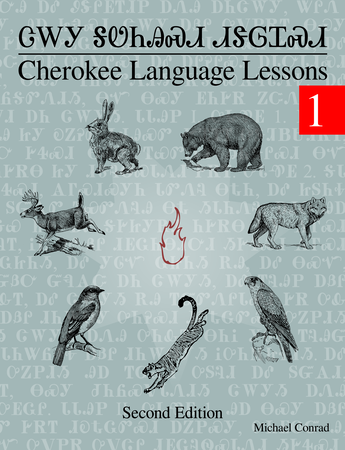
It is not perfection in speaking the Cherokee language that is required. Even the most proficient of speakers have differences in the way they speak from each other. What is required is participation. Participation in speaking it. In reading it. In writing it. In teaching it. If you do not participate, or if you go out of your way to cause others harm who are working hard to keep the language alive, you are only doing the work of those who sent us to the boarding schools. You have become “them”. The foreigners. The conquerors. Those who would remove us. Those who failed. Be counted among those who keep “them” failing. Be not among those who would remove us from this Earth.
One of the keys to acquiring a new language is to learn the patterns that make up the language. Simply learning phrases so you can speak “pidgin” Cherokee is not learning Cherokee. You need to learn the fundamentals of the language on how words are put together to be able to understand and communicate in the language. There are many degrees of meaning that different word parts provide and if you don’t learn these shades of meaning up front and how they are expressed you will never progress beyond simple memorized phrases and never obtain satisfaction with the language. While each person’s skill will differ, one should strive to gain enough understanding of the mechanics of the language to be able to comprehend and communicate effectively. The goal of this material is to provide you a solid structural foundation on how Cherokee works. You will learn how words are put together in basic sentences and how to form new words for ideas not listed in the dictionary.
You are about to embark on a journey of learning the Cherokee Language.
Please keep the following in mind as you do these lessons:
-
The lessons in this material are like life. First we crawl, then we walk, and finally we run. The Cherokee you find in these lessons has been modified to fit a special requirement referred to by many language instructors as Staying in Bounds. This means that the lesson exercise material only uses the vocabulary and grammar rules that have already been taught. As a result, many of the exercises, especially the earlier ones, will seem full of “childish” or “bad” Cherokee language to full speakers. As these lessons progress, the less “childish” or “bad” the Cherokee that is taught will be.
-
Cherokee is a language of description and of relationship. For this reason, much of the language at first glance appears to work opposite to the way English does. This material will hopefully ease the shift required in your thinking by starting early with some of these concepts that are so very different from English.
If you find what you believe to be an error in this material or would like to make a suggestion or comment, please visit us on the web at: http://www.cherokeelessons.com/.
When referencing this material, please be sure to notate the document revision tag: $Revision: 2.005 $.